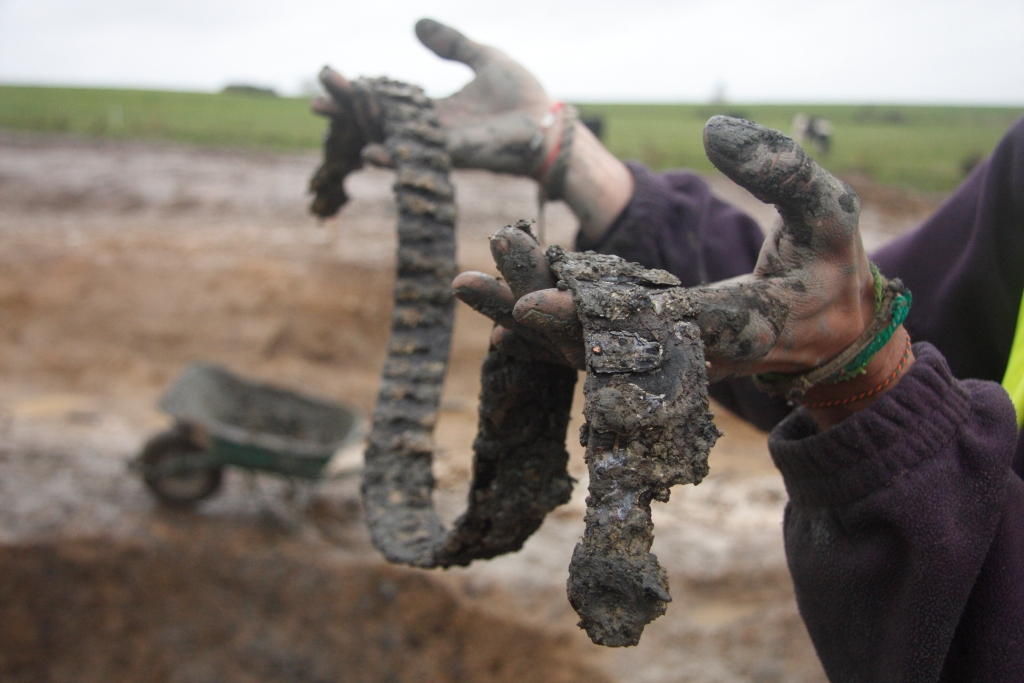During the excavation process we identified a big dark area behind the moat. Through careful excavation we realized this originally served as a well and was excavated down below the water table. Wet or waterlogged soils allow for preservation of materials which normally decay in a dry environment. This is due to the lack of air or `anaerobic´ condition. Once we got to the lower levels of the well the soil was extremely wet and lots of wood and a few scraps of leather were retrieved by the archaeologists.
Yesterday afternoon we found something really special near the bottom of the well- a complete leather belt which still retained its buckle and numerous metal studs along its length. This has been sent for conservation today in order to guarantee its preservation, but we will have more photos of it shortly once it has been cleaned up.


Neat discovery.
Brilliant ! Looking forward to the pictures minus the mud!
This is very cool. I’m not familiar with your investigation. Can you give us a hint as to its age and socio-cultural associations? Thanks
Hi Roger,
We still have to do a lot of the historical research for the site, but it looks like it was established by the Anglo-Normans, probably around the 13th century. It remained in use into the 17th century as we have material spanning that timeframe. The castle seems to have gone through a number of phases, but we are hoping our post-excavation process brings out more detail, which we will share on the blog!
Kind Regards,
Damian.
Nice!
Pingback: The Big Dig at Caherduggan Castle: Find of the Week #4 | Headlines
Pingback: The Breathtaking Caherduggan Belt: Rubicon’s Best Ever Find? | Headlines
Pingback: Rubicon’s Best Ever Find? Discovering A Uniquely Preserved Medieval Object » Day of Archaeology
How grand! I shall await more postings. Congratulations!
Thanks Joe! It is an exciting find!